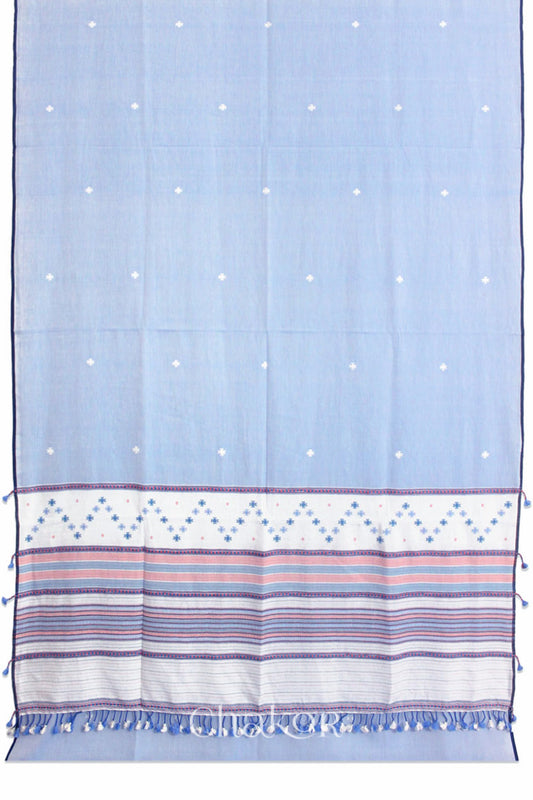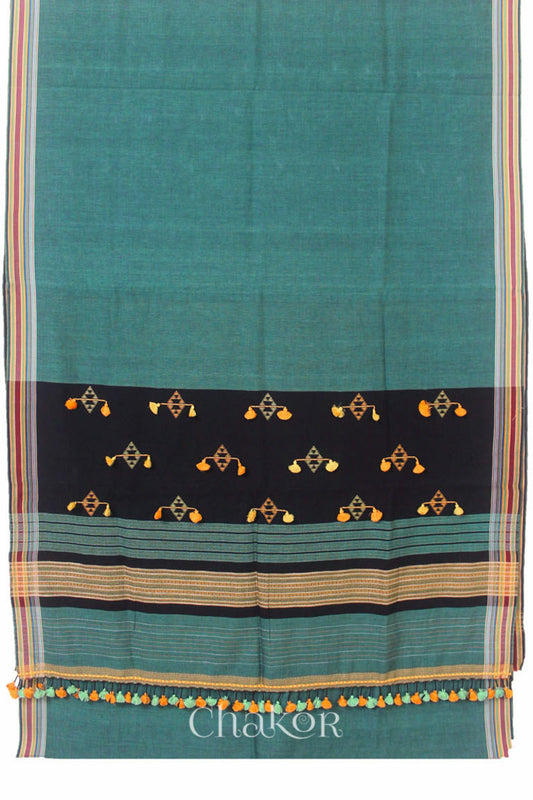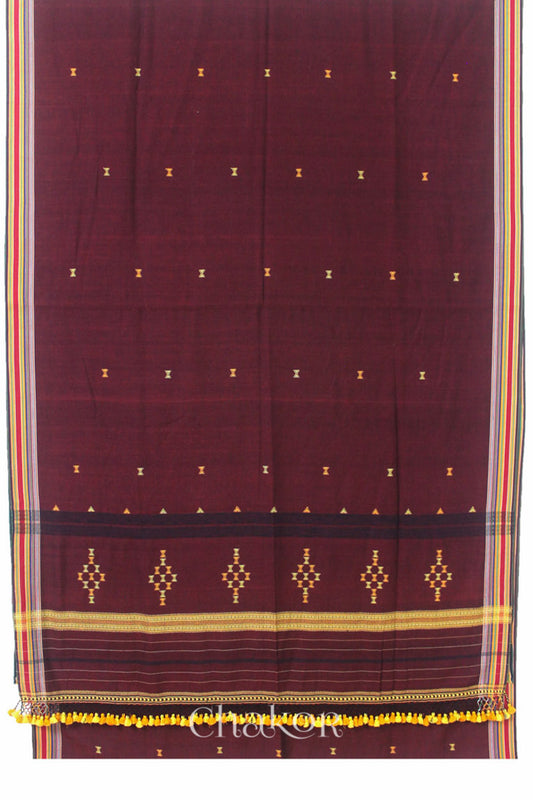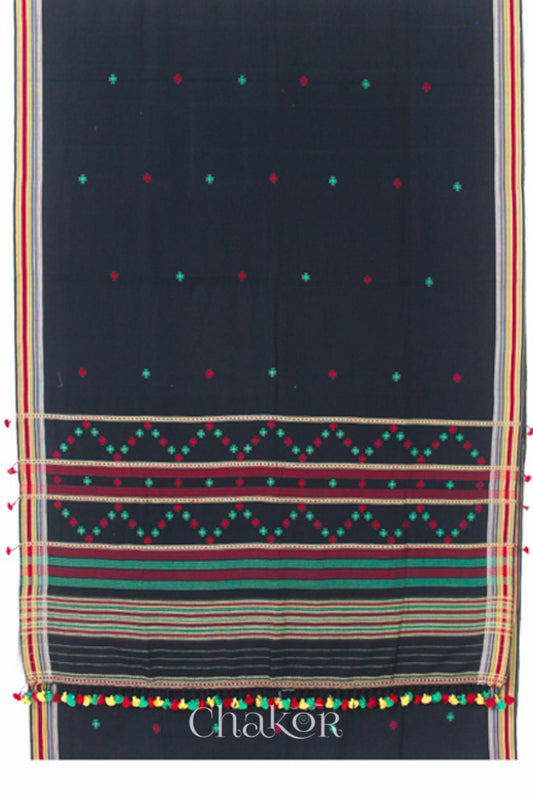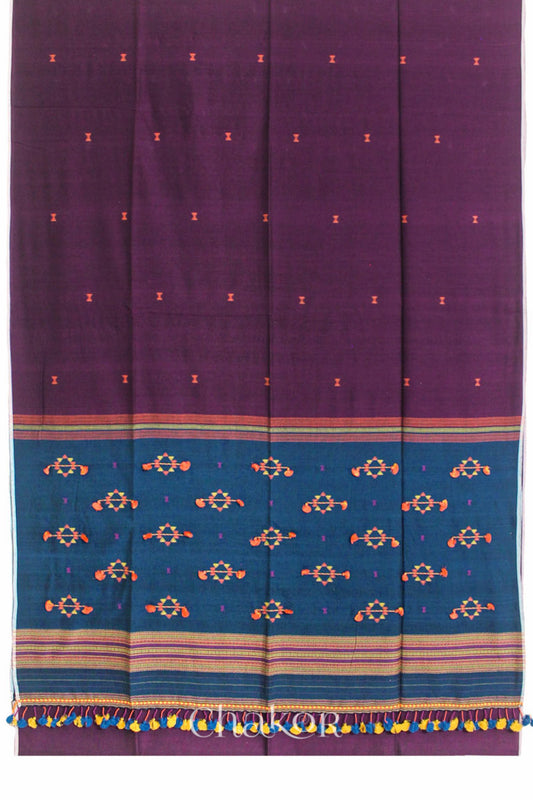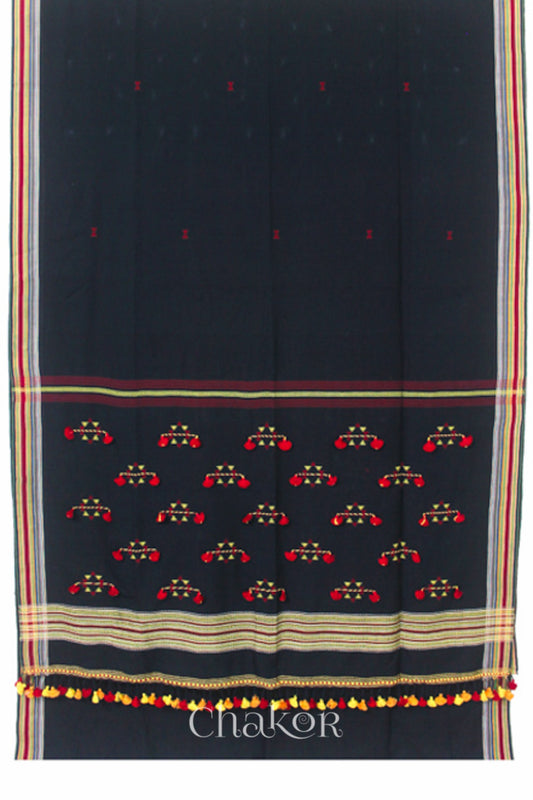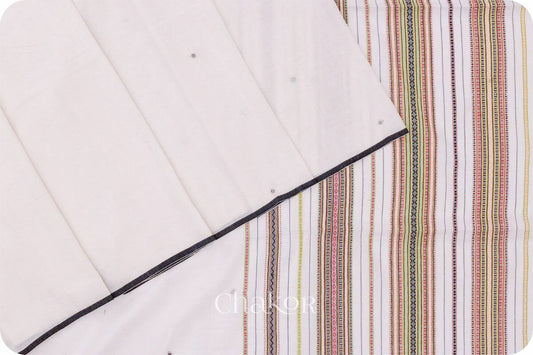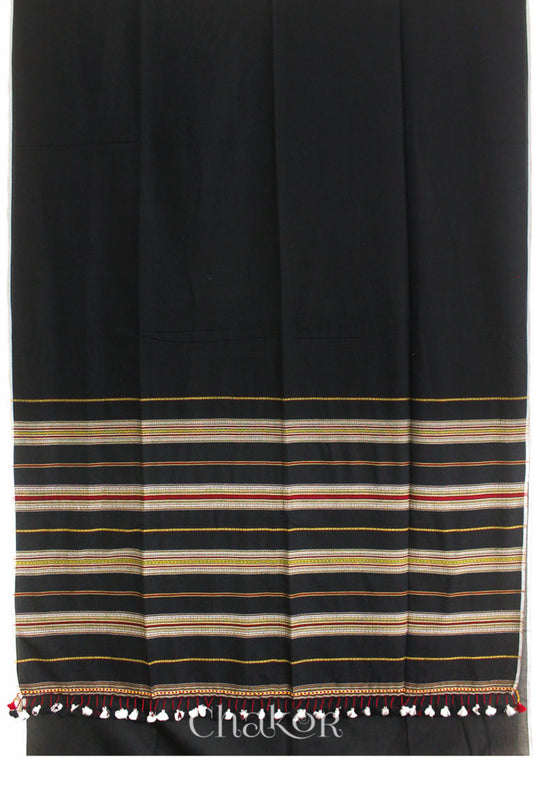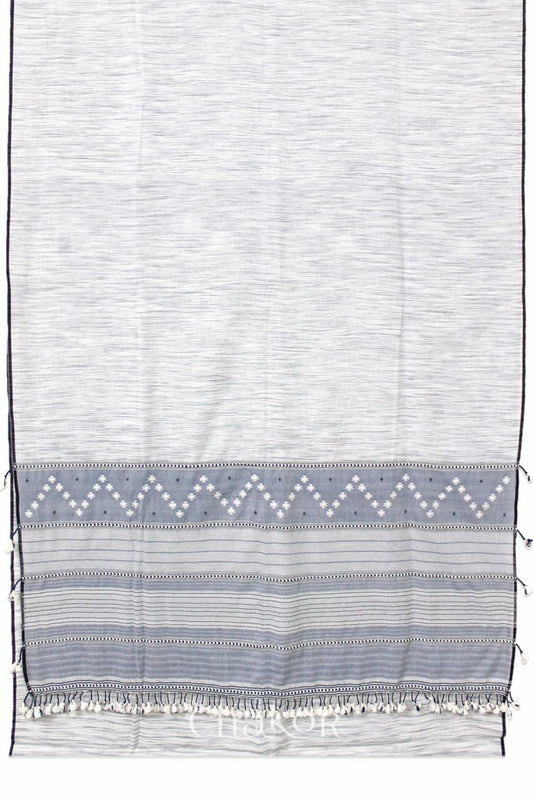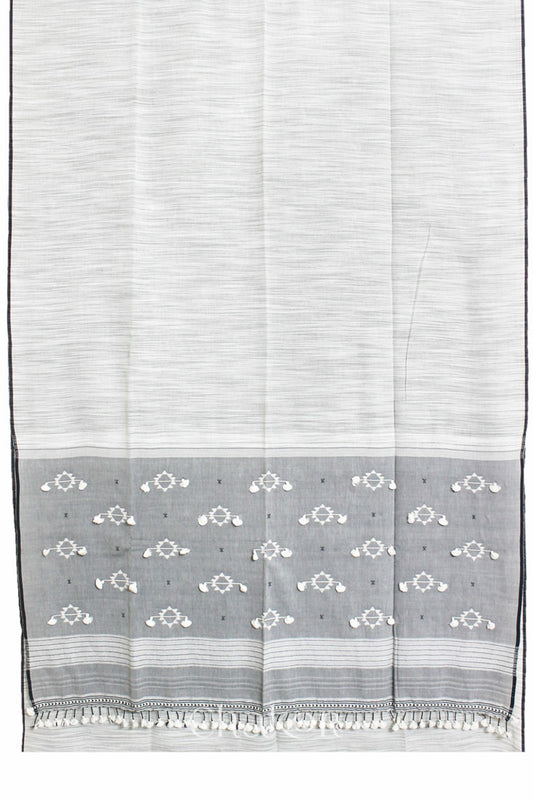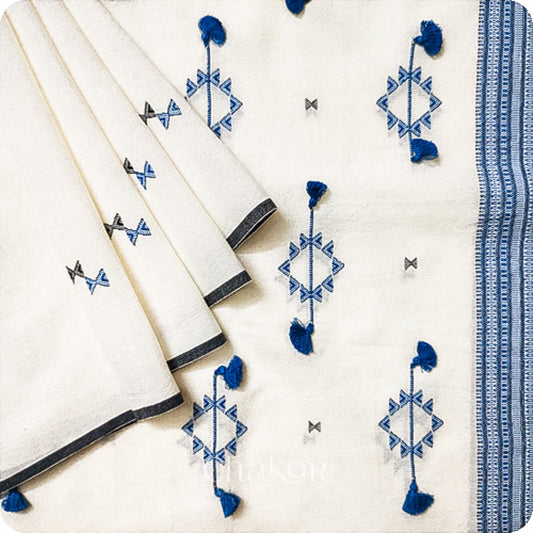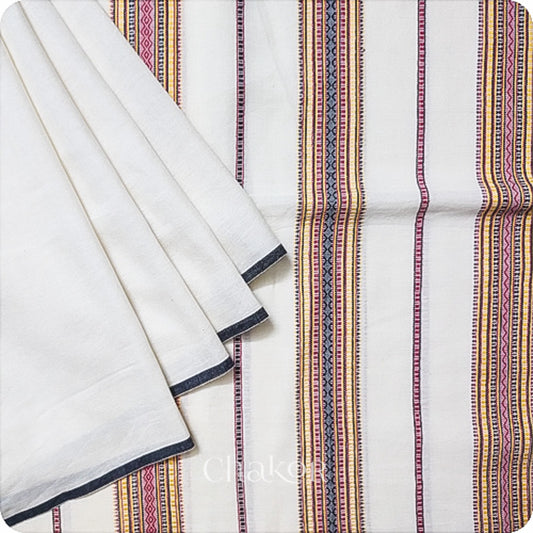Collection: Weaves from Bhujodi
Chakor’s Beloved Bhujodi - a collection of stunning handwoven sarees with exquisite extra weft weaving technique from Kutch.
-

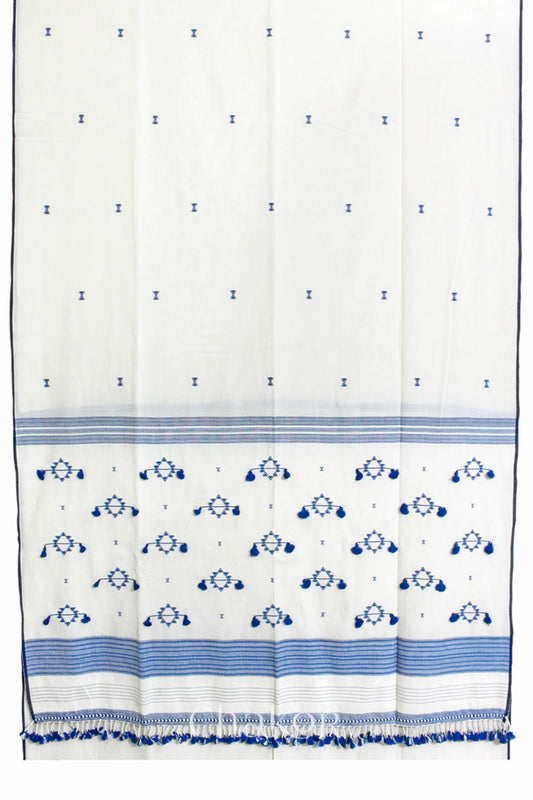 Sold out
Sold outOff-white Blue Bhujodi Cotton Saree
Regular price Rs. 12,500.00Regular priceUnit price / perRs. 12,500.00Sale price Rs. 12,500.00Sold out -
Blue Offwhite Bhujodi Cotton Saree
Regular price Rs. 10,800.00Regular priceUnit price / perRs. 10,800.00Sale price Rs. 10,800.00 -
Teal Black Bhujodi Cotton Saree
Regular price Rs. 13,500.00Regular priceUnit price / perRs. 13,500.00Sale price Rs. 13,500.00 -
Maroon Bhujodi Cotton Saree
Regular price Rs. 13,500.00Regular priceUnit price / perRs. 13,500.00Sale price Rs. 13,500.00 -
Black Bhujodi Cotton Saree
Regular price Rs. 13,500.00Regular priceUnit price / perRs. 13,500.00Sale price Rs. 13,500.00 -
Wine Blue Bhujodi Cotton Saree
Regular price Rs. 12,500.00Regular priceUnit price / perRs. 12,500.00Sale price Rs. 12,500.00 -
Black Bhujodi Cotton Saree
Regular price Rs. 13,500.00Regular priceUnit price / perRs. 13,500.00Sale price Rs. 13,500.00 -
Off-white Bhujodi Cotton Saree
Regular price Rs. 9,500.00Regular priceUnit price / perRs. 9,500.00Sale price Rs. 9,500.00 -
Black Bhujodi Cotton Saree
Regular price Rs. 9,500.00Regular priceUnit price / perRs. 9,500.00Sale price Rs. 9,500.00 -
Off-white Grey Bhujodi Cotton Saree
Regular price Rs. 10,800.00Regular priceUnit price / perRs. 10,800.00Sale price Rs. 10,800.00 -
Off-white Grey Bhujodi Cotton Saree
Regular price Rs. 12,500.00Regular priceUnit price / perRs. 12,500.00Sale price Rs. 12,500.00 -
Off-white Bhujodi Cotton Saree
Regular price Rs. 12,500.00Regular priceUnit price / perRs. 12,500.00Sale price Rs. 12,500.00 -
Off-white Bhujodi Cotton Saree
Regular price Rs. 9,500.00Regular priceUnit price / perRs. 9,500.00Sale price Rs. 9,500.00
Weaves from Bhujodi
Bhujodi, a serene weaving village in Gujarat’s Kutch region, is home to the Vankar community—masters of intricate handloom techniques passed down through generations. At CHAKOR, our Bhujodi cotton sarees celebrate the beauty of minimalism with woven motifs that echo the finesse of embroidery, crafted entirely on the loom.
Each saree features soft handwoven cotton, contrasting pallus, and complementing body hues—finished with whimsical tassels both along the pallu edge and intricately embedded within the design itself. These are timeless pieces that bring together simplicity, artistry, and everyday comfort.
-
 Bhujodi - Extra Weft Weaving
Bhujodi - Extra Weft Weaving
-
 Age Old Indian Crafts
Age Old Indian Crafts
-
 Exclusive Collections
Exclusive Collections
-
 Handmade Locally
Handmade Locally
-
 Artisanal Craftsmanship
Artisanal Craftsmanship
-
 Sustainable Slow Fashion
Sustainable Slow Fashion
Embroidered Illusion - Bhujodi Weaves

Bhujodi, a quaint village in the arid landscapes of Kutch, Gujarat, is synonymous with a unique and intricate craft that has woven its way into the fabric of Indian textiles. This craft, deeply rooted in the cultural heritage of the region, is an integral part of the diverse textile traditions that Gujarat is renowned for.
Historical Roots
Bhujodi's textile heritage dates back centuries, with its origins intertwined with the nomadic communities that settled in Kutch. The craft has been passed down through generations, evolving into a sophisticated art form that reflects the vibrant culture and artistic sensibilities of the region.
Craftsmanship and Technique:
Bhujodi craft is characterised by its intricate hand-weaving using extra weft technique, creating textiles with exceptional detail and precision. Artisans in Bhujodi are known for their mastery of traditional pit looms, where threads are meticulously intertwined to produce unique patterns and textures. The craft encompasses a variety of weaving styles, including plain weaves, twills, and the signature Kutchi weaving that incorporates vibrant geometric designs.
Distinctive Key Features of Bhujodi Craft:
- Fine Wool Weaving : Bhujodi is particularly renowned for its use of fine sheep wool, sourced locally. The wool is skillfully spun and woven into fabrics that are not only warm but also incredibly soft, making Bhujodi shawls and sarees a comfortable and luxurious choice.
- Geometric Patterns : Geometric patterns are a hallmark of Bhujodi craft. The intricate designs, often inspired by the natural landscapes of Kutch, feature geometric shapes and motifs that add a timeless and traditional touch to the textiles.
- Vibrant Color Palette : Bhujodi textiles are known for their vibrant color palette, reflecting the lively spirit of Kutch. The artisans use natural dyes sourced from plants and minerals to create a stunning array of colors, ranging from earthy tones to bold and bright hues.
The intricate patterns are all created by physically lifting up the threads of the warp with the fingers without a ‘Dobby’ or ‘Jacquard’ and the ‘Athh tako’ technique (with four peddles in the loom) is unique, and then manually inserting the extra weft thread to form the motifs and designs. Sometimes, a single weft thread is passed through for border patterns and multiple thread are used to form the motifs. The entire process is like creating embroidery on a loom, which is why it is highly time-consuming and requires skill and patience. It is a collective effort by the family, where the women are actively involved in preparing the yarn of the warp and winding bobbins needed for the motifs, while the laborious process of weaving is left to the men.

CHAKOR's Beloved Bhujodi
At Chakor, we take pride in presenting the rich legacy of Bhujodi craft through our exclusive saree collection, where tradition meets contemporary elegance. Our exclusive Bhujodi saree collection narrates the tales of vankars or weavers that are not only meticulous and hardworking but innovative and ingenious. Each saree is Beautifully adorned with intricate geometric motifs and playful tassels, reflects the timeless beauty of Kutch's textile heritage. Our collection celebrates the authenticity and craftsmanship of this unique tradition, highlighting our commitment to preserving and showcasing Bhujodi craft, honoring India's cultural diversity. Our sarees pay homage to the skilled artisans of Bhujodi, immersing you in the heritage of Kutch, Gujarat.





